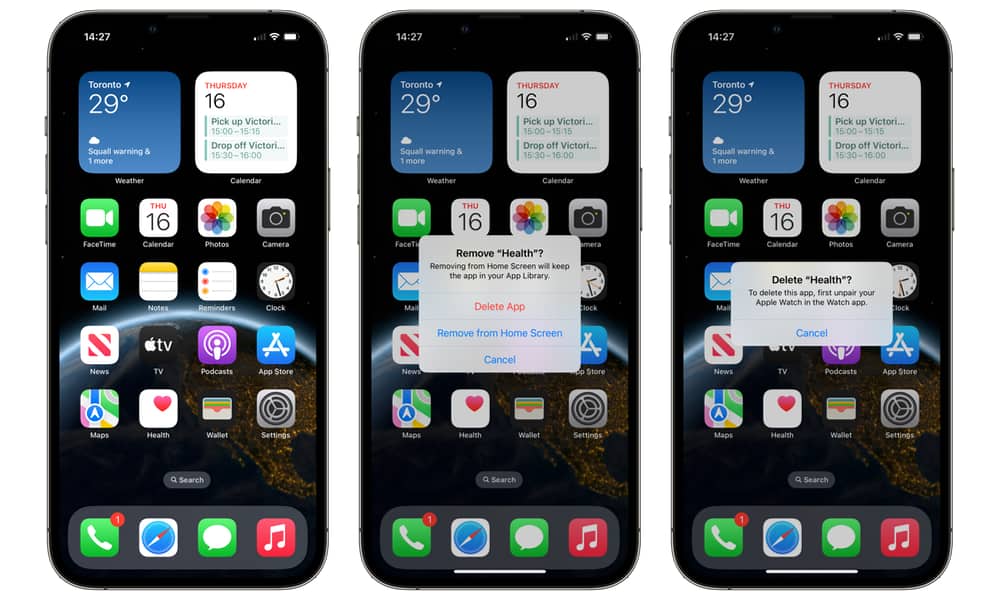You’ll Be Able to Remove Even More Stock Apps in iOS 16
 Credit: N.Z. Photography / Shutterstock
Credit: N.Z. Photography / Shutterstock
Toggle Dark Mode
With iOS 16, Apple is making it possible to remove even more apps that come preinstalled on your iPhone.
For years, iPhone users were stuck keeping Apple’s stock apps around even if they had no use for them — a throwback to the original iPhone in the days before the App Store when it wasn’t even possible to rearrange apps on the Home Screen.
To make matters worse, there was no App Library in those days, so users had to find other creative ways to keep those apps out of sight — usually dropping them into a folder of “Unused Apps” or relegating them to an unvisited home screen page.
It wasn’t until iOS 10 came along that Apple provided the ability to delete any of these first-party Apple apps. That first release encompassed most, but not all, of Apple’s third-party apps. The exceptions were mostly understandable — removing the Settings app would be a very bad idea — but there were a few others like Safari, Camera, and Photos that Apple simply didn’t want users to get rid of.
Technically speaking, iOS 10 didn’t actually let you delete the built-in apps; it merely hid them from your Home Screen. Removing them entirely didn’t arrive until iOS 12.
The good news is that iOS 16 is expanding this list even further, and while there are still a few you’ll be stuck with, iPhone users who want to escape Apple’s first-party apps and services will be in an even better position to do so.
Specifically, iOS 16 finally allows for the removal of the Clock and Find My apps. It’s understandable why these were necessary — Clock controls the built-in alarms and timers, and Find My is a key part of the entire Find My Network experience. However, Apple has now acknowledged that maybe some folks just have other alternatives for these.
It’s also now possible to delete the Health, Fitness, andWatch apps — but only if you’re not using an Apple Watch. If you try to remove them while an Apple Watch is paired to your iPhone, you’ll see a prompt to unpair your Apple Watch first.
Beyond that, you can also remove pretty much any other first-party app. The list is so long — around 30 apps in total — that it’s probably easier to talk about the ones you still can’t remove.
As mentioned earlier, Settings is the most obvious one on this list since, without that one, you’d have no way of configuring anything on your iPhone. However, here are the other ones that Apple still insists you keep, listed in order of their default Home Screen placements:
- Photos
- Camera
- App Store
- Wallet
- Phone
- Safari
- Messages
While it’s easy to see why some of these are necessary, others are a bit of a mystery. For instance, despite Apple’s willingness to embrace alternative default browsers in iOS 14, Chrome users will still have to keep Safari kicking around.
Likewise, users of Google Photos still need to retain Apple’s Photos app, presumably since it powers the core iOS photo library that everything else ties in to; Apple has yet to provide an API for choosing photos from third-party apps.
Thankfully, the App Library introduced in iOS 14 at least lets you move these apps out of the way if you really don’t want to use them. You no longer need to buy them in some random folder — just remove them from your home screen, and they’ll be filed away mostly out of sight within the appropriate App Library drawer.
Gone But Not Forgotten
It’s also worth keeping in mind that deleting an app doesn’t necessarily remove its underlying data. For example, Apple’s support document on this makes it clear that your Contacts will remain on your device if you delete the Contacts app since they’re still used by the Phone app.
Similarly, you’ll still be able to make and receive FaceTime calls even if you remove the stock FaceTime app, as that’s a core feature available through the Phone app.








